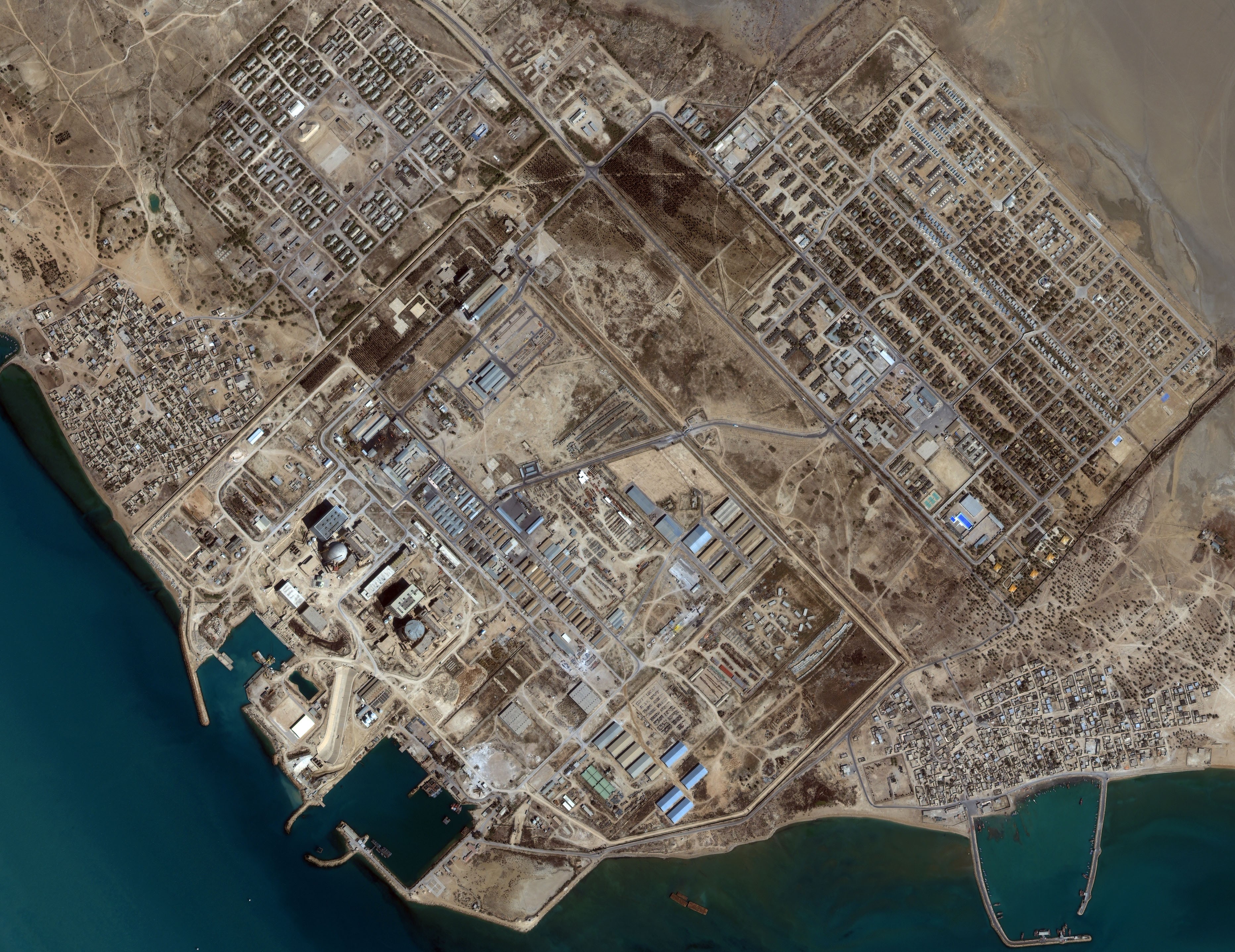
Tensions Increase in the Gulf over Iranian Nuclear Projects
Publication: Eurasia Daily Monitor Volume: 6 Issue: 39
By:

This week Sergei Kiriyenko, the chief of Russia’s Federal Atomic Energy Agency (Rosatom), went to the Persian Gulf port of Bushehr to announce that Russia had completed construction of Iran’s first light-water, industrial, 1,000-megawatt nuclear power reactor. Kiriyenko told journalists that "The construction stage of the nuclear power plant is over" and that complex tests and "pre-commissioning procedures" had begun. To test the reactor, it was loaded this week with dummy fuel rods in which uranium was replaced with lead (RIA-Novosti, February 25).
Accompanied by Gholam Reza Aghazadeh, the chief of Iran’s Atomic Energy Organization, Kiriyenko told journalists that in the coming five years Iran would install 50,000 gas centrifuges to enrich uranium at the underground plant in Natanz in central Iran, which today has 6,000 centrifuges. Aghazadeh added, "America should face reality and accept living with a nuclear Iran" (Reuters, February 25).
Bushehr is scheduled to become fully operational before the end of the year. According to Kiriyenko, during the reactor’s first year of operation it will be manned by Russian workers and all spent nuclear fuel will be returned to Russia for reprocessing (Echo Moscow, February 25). Kiriyenko announced that Russia would supply Bushehr with nuclear fuel for at least 10 years. Rosatom hopes to win a contract to build more reactors in Iran (Interfax, February 25).
The Bushehr nuclear power plant was partially constructed in the 1970s by Siemens but was abandoned unfinished after Iran’s Islamic Revolution in 1978. The Russian company Atomstroyexport signed a contract in 1995 to rebuild Bushehr by 2000 for an estimated $800 to $900 million; but work dragged on and costs increased, as Moscow and Tehran bickered over the price. A deadline for completion was not met in the fall of 2006 or in the following year. It was reported that Atomstroyexport was paid over $1 billion by the end of 2007 and demanded $200 million more (RIA-Novosti, February 25; Kommersant, March 12, 2007). Apparently, an agreement was reached by the end of 2007, and Russia began to ship 82 tons of nuclear fuel to Iran to fill the reactor. At present, this fuel is stored in Bushehr under the seal of the UN nuclear watchdog, the International Atomic Energy Agency (RIA-Novosti, February 25).
The U.S. has expressed concern that the Bushehr reactor will help Iran in its alleged covert effort to build nuclear weapons. The security measures advertised by Kiriyenko in Bushehr—the operation of the reactor by a Russian crew of several hundred till at least 2011 and the contract for 10 years to supply fuel and reprocess spent rods under IAEA supervision—could somewhat lessen these concerns while allowing Rosatom to earn much-needed dollars.
A recent IAEA report states that the Iranian uranium enrichment operation in Natanz has substantially slowed down, with only 4,000 of the centrifuges working. According to the IAEA, Iran has been accumulating enriched uranium, but all together it seems to be only enough to make a single nuclear device within two years (Reuters, February 25). There have been reports from Western intelligence sources that Iran has run out of raw uranium to enrich. Iran does not have substantial amounts of its own natural uranium, and until now the West has managed to prevent imports of any substantial amounts from abroad (La Repubblica, January 26).
The 82 tons of Russian reactor-grade enriched uranium fuel for the Bushehr power station poses a serious potential problem. The fuel is on Iranian territory and IAEA safeguards could be bypassed or simply ignored. Moreover, there is no need to load all the supplied fuel rods into the reactor to produce electricity. By diverting only a fraction of the Russian-supplied enriched uranium, Iran could untangle its present uranium supply crunch.
Iran continues to defy international demands to stop its uranium enrichment program, and its relations with other nations in the region are tense. This week Iranian Interior Minister Sadeq Mahsuli attended a high-level security and antiterrorist conference in Bahrain in an apparent attempt to soothe relations with his country’s Arab neighbors, but the result was a public clash that I witnessed. Abdulrahman bin Hamad Al Attiyah, the Gulf Cooperation Council (GCC) secretary general, announced that "inadmissible and regrettable" Iranian statements threatened Bahrain’s sovereignty. Al Attiyah recalled the "occupation by Iran for 40 years" of three disputed islands claimed by the Arab Emirates in the gulf. The GCC wants a settlement of the Iranian nuclear issue. According to Al Attiyah, Iran is undermining stability in the gulf, and "this has forced the massive deployment of naval power in the area." The U.S. Fifth Fleet headquarters are in Bahrain, and its commander Vice Admiral William E. Gortney presented to the conference a crisp vision of the U.S. Navy’s mission in the Persian Gulf: forward deployment, deterrence capability, and command of the sea, projecting power and, as a result, maritime security.
The Iranian minister responded by accusing the "Zionist Israeli entity" of destabilizing the "Persian Gulf" together with the United States, while Iran was committed to peace (the Arabs, of course, never refer to the Gulf as "Persian"). Mahsuli charged that U.S. "terrorist occupation" under the pretext of "fighting terrorism" had resulted in the spread of drugs from Afghanistan to Iraq. According to Mahsuli, peace in the region is possible "only without any outside forces." The Bushehr nuclear reactor goes into operation on top of what seems to be a smoldering regional powder keg.




